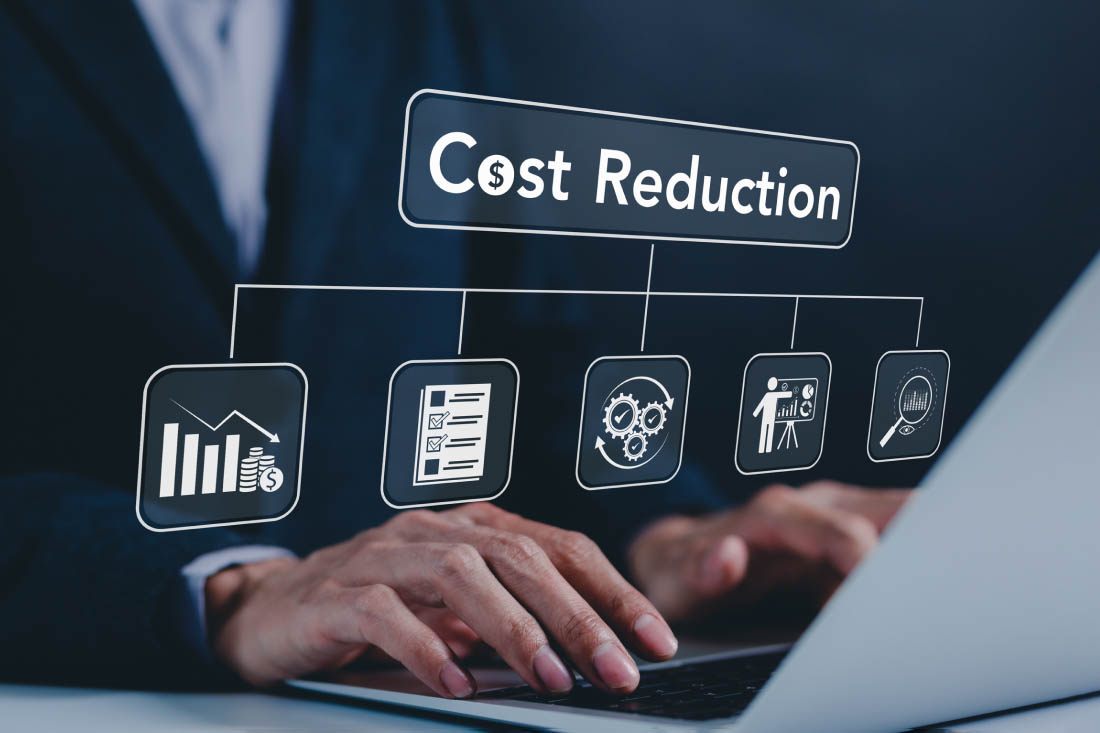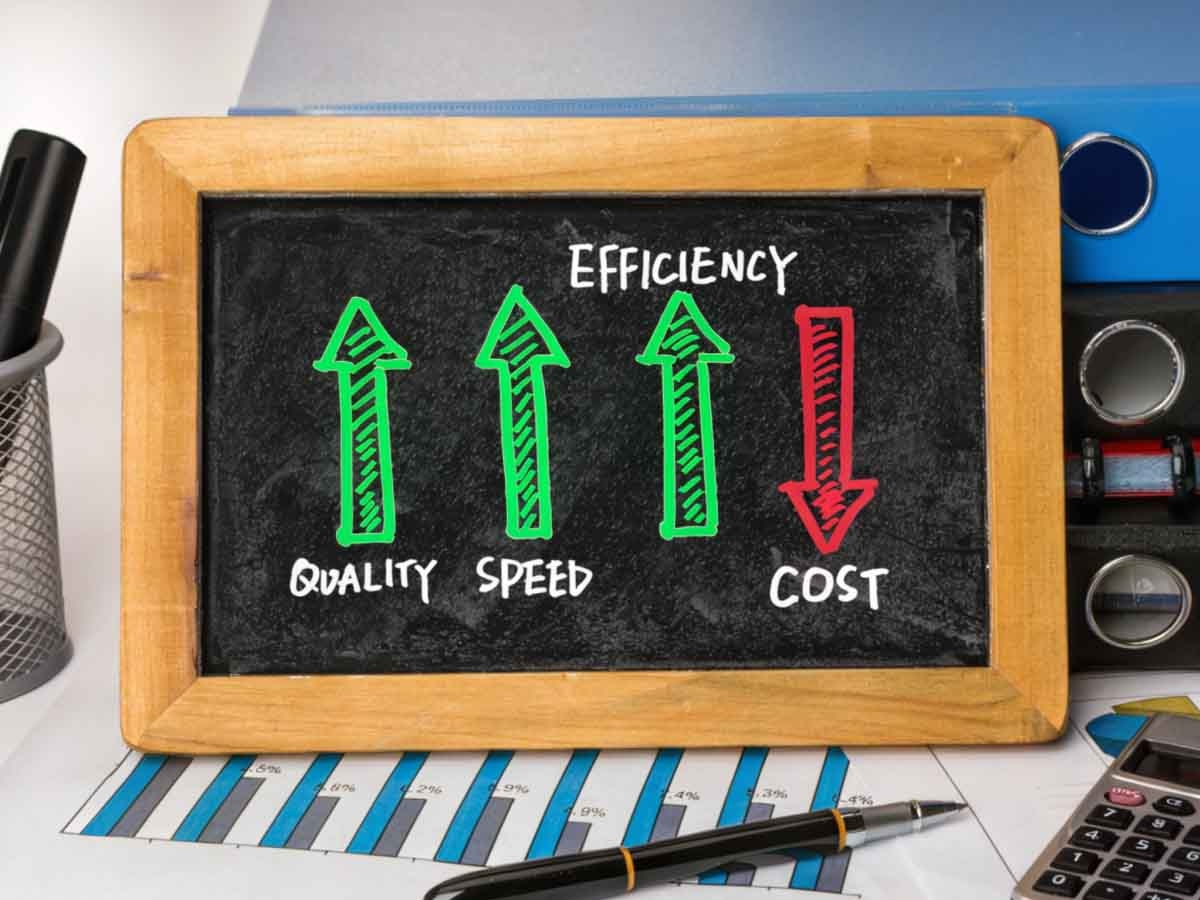When was the last time your organization took a good, hard look at your technology costs? If it’s been awhile, or if you’ve never considered creating an IT cost management plan, now’s the time to start.
IT cost optimization is a great way to reduce waste while improving workflows. It goes beyond business cost optimization to focus on technology spending, with a focus on reallocating resources in ways that drive value and support business goals.
Ready to get started? Keep reading for a primer on how to build an effective IT cost optimization plan.
What is IT cost optimization?
IT cost optimization is a method for maximizing business technology spending. It’s how organizations ensure every contract and license provides real value. Think of it as the difference between randomly cutting costs and strategically investing in the right tools and systems.
Instead of the old approach of slashing IT budgets when times get tough, savvy executives use IT cost optimization to understand what they actually pay for — software licenses sitting unused, duplicate systems doing the same job and vendor contracts that haven’t been renegotiated in years. This information helps free up funds for technology that actually moves the needle, whether that means better cybersecurity, improved customer experiences or tools to help teams work more effectively.
Why IT cost optimization is important
IT cost optimization isn’t about making desperate cuts when budgets get tight. Rather, it’s a way to rethink IT spending for long-term growth. When organizations focus solely on short term savings, they create bigger problems down the road. Purchasing cheap software today leads to expensive workarounds tomorrow, and skipping important security updates result in costly breaches later.
Smart cost optimization focuses on building a sustainable approach — one that balances immediate needs with future growth. It means improving efficiency not just to save money today, but to create systems that scale intelligently as your business grows. This approach allows you to:
- Enhance resource allocation by moving budget from redundant tools and unused licenses to technology that directly supports productivity.
- Improve operational agility by creating flexible IT infrastructure that adapts quickly to market changes, without requiring rushed purchasing decisions.
- Reduce risk by uncovering and eliminating hidden costs, such as sprawling software subscriptions and over-provisioned cloud resources.
- Make more informed decisions with clear insights into which technology actually delivers value, enabling smarter choices about future investments and upgrades.
- Improve your competitive advantage by freeing up resources to invest in innovation, research and development.
Key areas to target for IT cost reduction
What does an IT cost optimization strategy look like in practice? Most focus on several key areas.
1. Software licenses
Most organizations purchase more software licenses than they actually need, making this an ideal place to start. Conduct an audit to identify redundancies and unused apps. Then use this information to quickly reduce SaaS costs and build a SaaS cost optimization. This step may sound simple, but it goes a long way in maximizing ROI and reducing your risk of future app sprawl.
2. Cloud services
One of the most common areas of IT waste lies in cloud services. Many organizations over-provision cloud resources, resulting in inflated costs. Conduct regular cloud usage audits to identify underutilized instances, rightsize licensing and terminate unnecessary services. Optimizing your cloud architecture for both performance and cost-effectiveness is a great way to set the stage for long-term success.
3. Operational processes
Operational processes sometimes contribute to IT waste, especially when teams rely on outdated methodologies or lack clear communication. Look for opportunities to improve workflows, automate manual tasks and increase agility. Together, these changes free IT staff to focus on strategic projects rather than routine maintenance. They also help ensure teams get as much value as possible from your IT investments.
How to build a cost optimization strategy that drives results
At its core, IT cost optimization requires a deep understanding of existing IT assets, services and processes. You need to assess current spending patterns, identify areas of inefficiency and explore opportunities for improvement. Not sure where to start? Follow these three proven steps.
1. Audit your current IT environment
Think of this step like taking inventory of your kitchen before grocery shopping — you need to know what you already have before deciding what to buy next. Start by creating a complete picture of your IT landscape, including every software license, cloud service subscription and piece of hardware your organization currently pays for. This isn’t just about counting assets. It’s about understanding how everything is actually used.
Look for the obvious red flags first. Are software licenses collecting dust? Do cloud instances run 24/7 when you only need them during business hours? Do you pay for multiple tools that do the same job? These discoveries often surprise even seasoned IT professionals. One survey found nearly half of the software licenses organizations pay for go unused — a classic example of how spending spirals out of control without proper oversight.
2. Solicit feedback
Your IT team knows the technical details, but employees experience how technology actually works in practice. They’re the ones dealing with slow applications, workaround solutions and tools that promise everything but deliver frustration. Getting their input isn’t just good politics — it’s essential intelligence for making smart optimization decisions.
Create easy ways for people to share their experiences. This might be as simple as a survey asking which tools teams use daily versus which ones they avoid, or setting up brief conversations with different departments about their biggest technology pain points. You may even find people prefer a much cheaper alternative to your expensive enterprise solution.
3. Prioritize plans
Now comes the strategic part — deciding which changes offer the biggest bang for your buck. Not all cost-saving opportunities are created equal, and trying to tackle everything at once is a recipe for chaos. Focus on initiatives that offer clear financial impact with manageable implementations.
Start with the low-hanging fruit, such as redundant subscriptions and unused cloud storage you identified in your audit. These quick wins build momentum and free up budget for more complex optimizations later. Then move to bigger-picture changes like cloud rightsizing or software consolidation. The key is balancing immediate savings with long-term strategic value, always keeping an eye on how changes impact day-to-day operations and employee productivity.
Considerations to plan for when optimizing IT costs
Cost optimization isn’t just about cutting numbers on a spreadsheet — it’s about managing change while keeping teams productive and engaged. Even the most well-intentioned cost-saving measures backfire if they disrupt workflows or create confusion. Keep these important considerations in mind as you implement your optimization strategy:
- Communicate the bigger picture. When people understand why changes are happening and how they’ll benefit the organization long-term, they’re much more likely to embrace new processes. Regular updates and open forums help prevent rumors and resistance from taking root.
- Invest in proper training. Switching to new tools or processes without adequate training is like handing someone car keys without teaching them to drive. Provide workshops, documentation and ongoing support to help employees adapt confidently to changes.
- Address employee concerns. Cost-cutting measures are bound to trigger anxiety about job security or increased workloads. Be transparent about what changes mean for different roles, and emphasize how optimization creates opportunities for more strategic, valuable work.
- Be thoughtful with automation. Technology should eliminate tedious tasks without eliminating the human element entirely. And the most cost-efficient solutions often enhance human capabilities rather than replace them. Look for tools that automate routine processes and free teams to spend more time on creative problem-solving.
- Celebrate wins along the way. Recognizing successful optimizations and the people who influenced them builds momentum and reinforces the message each change is a positive step forward.
Inform your IT cost optimization with real-time ActivTrak insights
If you’re looking to reduce waste, improve productivity and free your team for high-value activities, IT cost optimization is the way to go. But to do it right, you need the right data. And ActivTrak provides the real-time visibility you need to make data-driven choices. You’ll see exactly which applications teams use, how often they use them and whether expensive software licenses deliver genuine value or just sit idle.
In fact, thousands of organizations use ActivTrak for this very reason. Instead of blindly cutting costs or relying on department heads to self-report software needs, our technology usage dashboards equip you to identify genuine redundancies, spot underlicensed teams and make strategic decisions about renewals or new purchases. These insights help you optimize for more than just cost. They also allow you to ensure employees have the right technology to do their best work.
Ready to take the guesswork out of IT cost optimization? Discover how ActivTrak’s app and website usage insights help you make smarter technology investments. Request a demo to see how data-driven decision making transforms IT spending.





